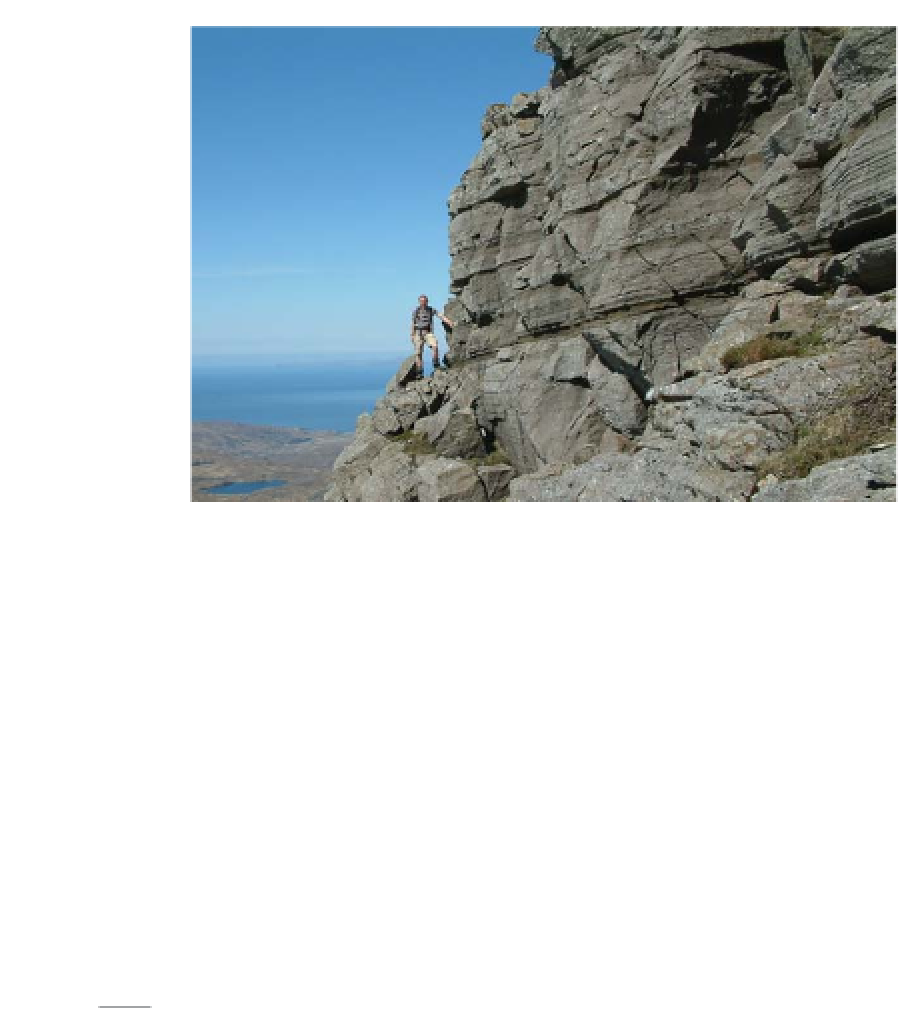Geology Reference
In-Depth Information
Figure 8.4
Layering on a variety of scales picked out by modal changes in abun-
dance of key phases, for example olivine, plagioclase and pyroxene. Western
layered series of Rum, Scotland.
Layers and laminae (see Section 2.4.2 for definitions) vary greatly in
composition, texture and lateral extent. They may be
graded
in terms of
mineral content and grain-size, and the commonest case is for upward-grading
from dense to less-dense (dark- to light-coloured) minerals, or from coarse- to
fine-grain size (Figures 8.3 and 8.4).
The contacts between layers vary between sharp and gradational, and between
concordant and discordant with the adjacent layer. Both layers and laminae
may be qualified by the terms '
grain-size
', '
modal
' (that is, mineral propor-
tion) and '
textural
' for a field description. In many intrusions, the layering may
show complex medium-scale structures, such as channelling, cross-stratification
(of discordant layers), slumping and complex convolution within layering (for
example, Figures 8.5 and 8.6). In some cases, xenoliths of early-crystallised
cumulate appear to have slumped into younger layered cumulates. These features
are similar to common sedimentary structures and their occurrence provides evi-
dence of processes that deform and slump soft sediments and do
not
necessarily
require crystal settling.
Due to the abundance of layering and other 'sedimentary' type features (for
example, slumping) that are common in mafic/ultramafic intrusions, they can be
very well expressed by using graphic logs (see Chapter 2). An example of such
















